01:27
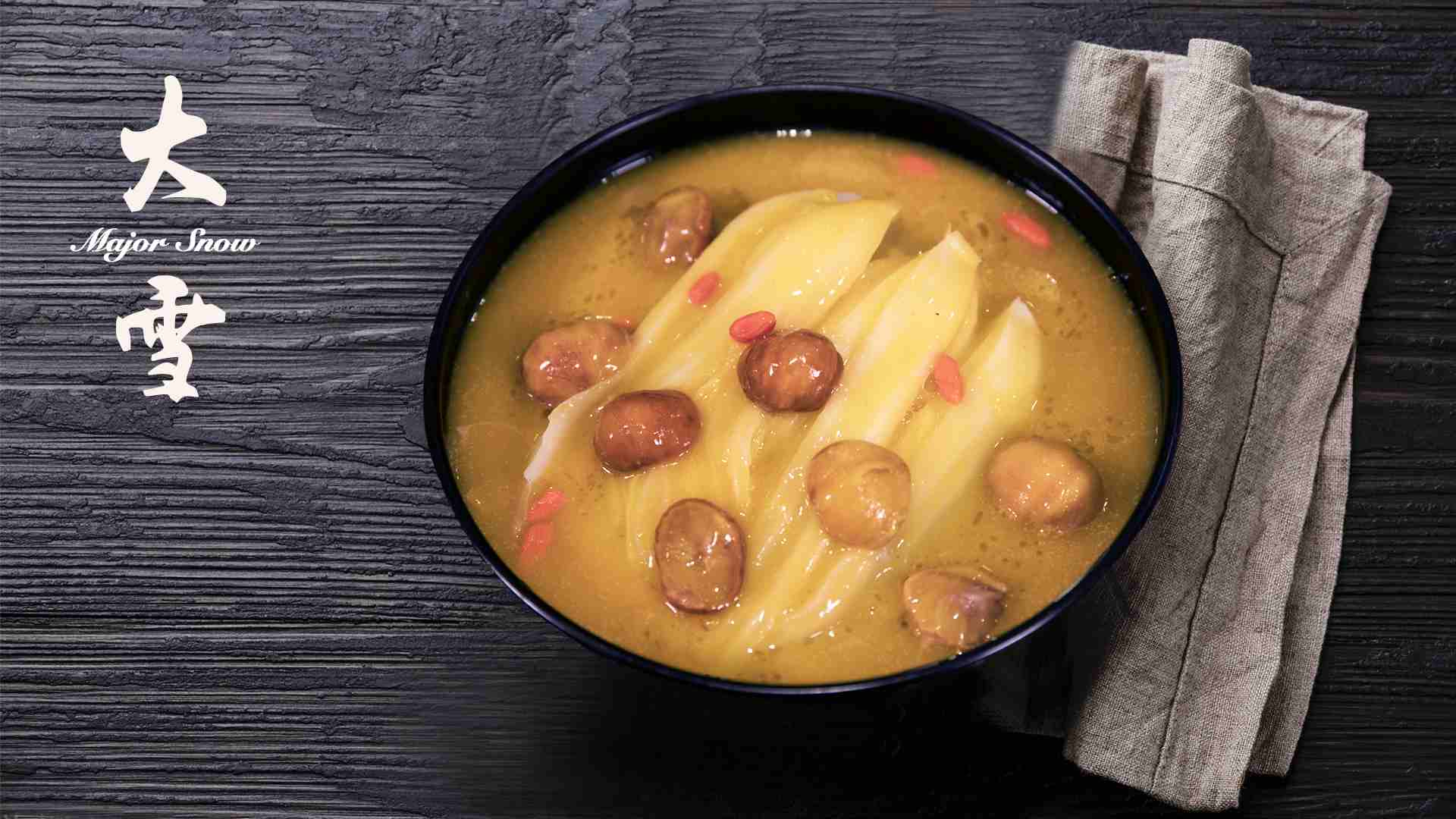
"Do you wanna build a snowman?" Now is the time!
Snowflakes fall heavily in sheets, decorating the whole world in pure white – this breathtaking natural scenery is very likely to be seen in northern China when Major Snow arrives.
Falling on December 7 this year, the Major Snow, also known as
"Da Xue" in Chinese, is the 21st solar term of the Chinese lunar year, followed by the next one of Winter Solstice on December 22.
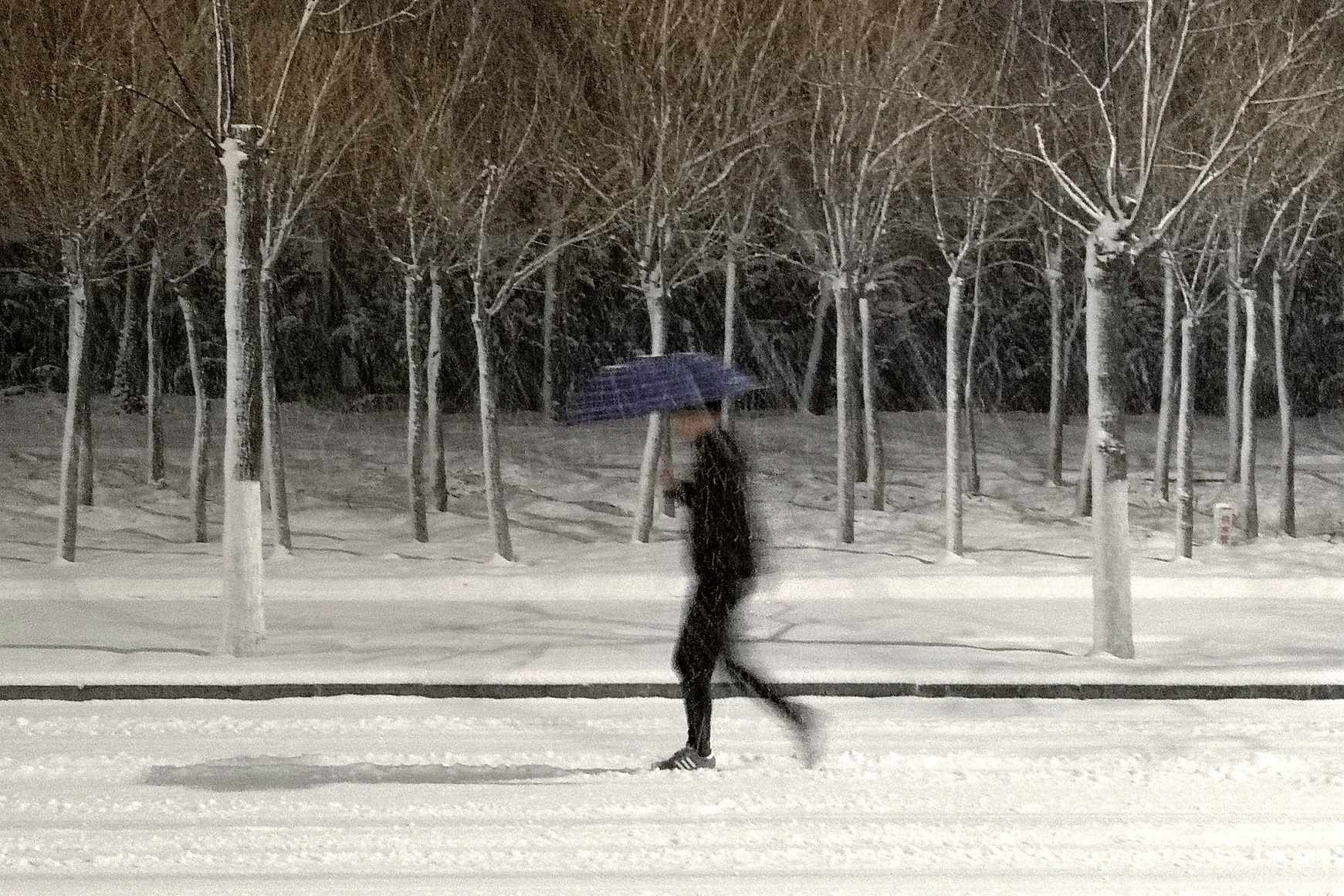
The first snow of this winter falls on the eve of Major Snow in Yantai, east China's Shandong Province, December 6, 2018. /VCG Photo, edited by Hong Yaobin
The first snow of this winter falls on the eve of Major Snow in Yantai, east China's Shandong Province, December 6, 2018. /VCG Photo, edited by Hong Yaobin
Similar to the
Minor Snow (also,
Light Snow), Major Snow, as its name implies, reflects the phenomenon of precipitation, indicating the time and intensity of snowfall.
During this period of time, the weather gets colder and the snow starts to accumulate on the ground – in most of the northern areas in China, the temperature can plummet to about minus ten degrees or even below with heavy snow blocking the roads.
When the world is dressed up with the white jacket, farmers in China might be another excited group aside from the snowman lovers, and see even more as the old proverb tells: "A timely snow promises a good harvest."
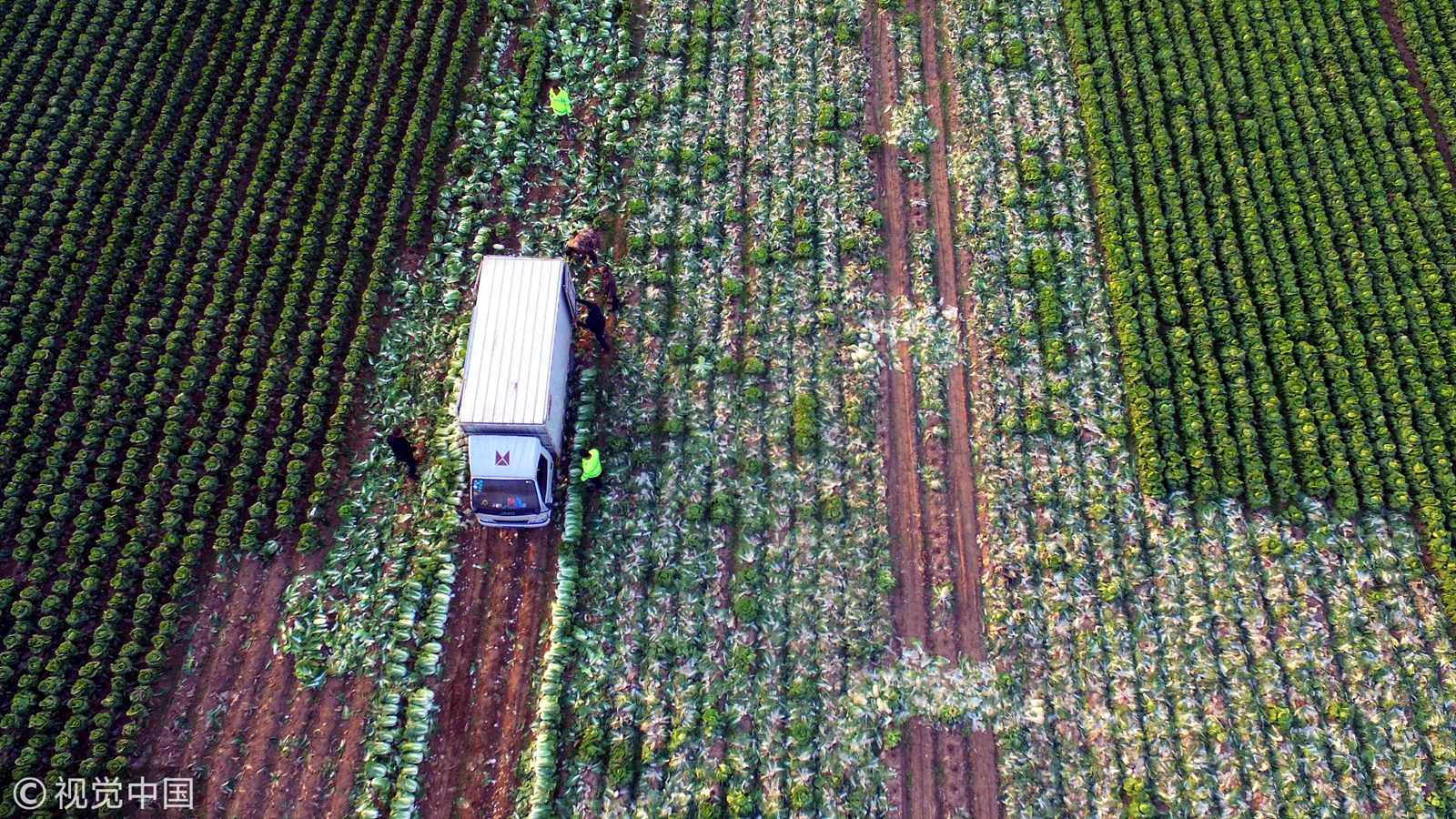
Farmers drive a truck into the production base on the day when Major Snow begins to load a great number of Chinese cabbages that are harvested in Linyi, east China's Shandong Province, December 7, 2017. /VCG Photo
Farmers drive a truck into the production base on the day when Major Snow begins to load a great number of Chinese cabbages that are harvested in Linyi, east China's Shandong Province, December 7, 2017. /VCG Photo
They believe the thick snow that covers the ground somehow helps protect the crops beneath and the soil from the low temperature, surviving the severe winter.
And when the spring comes and it gets warmer, the snow begins to melt, offering the water that can be absorbed by the soil.
Not only does the great snow to a certain extent promise a good harvest, but it also observes a grand harvest of Chinese cabbage in its best time.
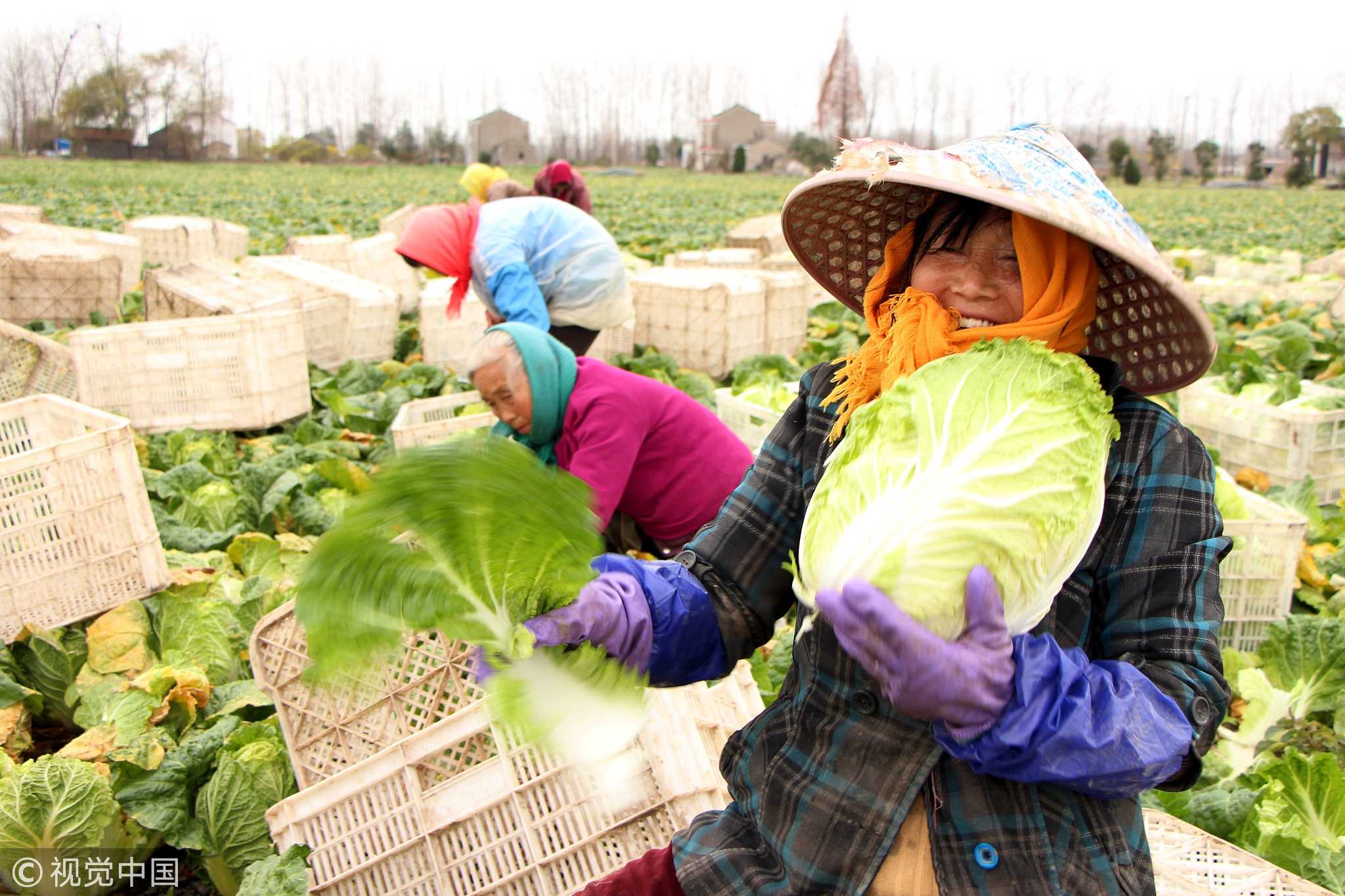
A woman holds a Chinese cabbage that she reaped from their own farm in the village of Wanmin in Yangzhou, east China's Jiangsu Province, December 6, 2018. /VCG Photo
A woman holds a Chinese cabbage that she reaped from their own farm in the village of Wanmin in Yangzhou, east China's Jiangsu Province, December 6, 2018. /VCG Photo
The temperature that drops significantly stops the loss of the moisture in the cabbage, which makes it taste quite crispy and juicy. Chinese cabbage or "Dabaicai" in Chinese, therefore, becomes a perfect ingredient for the seasonal treat during Major Snow.
Another folk saying widely spread among the Chinese people goes: "Chinese cabbage is better than any other vegetables." Storing up cabbage in these cold days is an annual tradition, especially for the people living in the northern areas.
Chinese cabbage full of plant fiber can provide rich vitamin C, vitamin E, and other nutrients, which are in demand for our bodies in winter when many people prefer the high-calorie, high-fat, high-sugar foods.
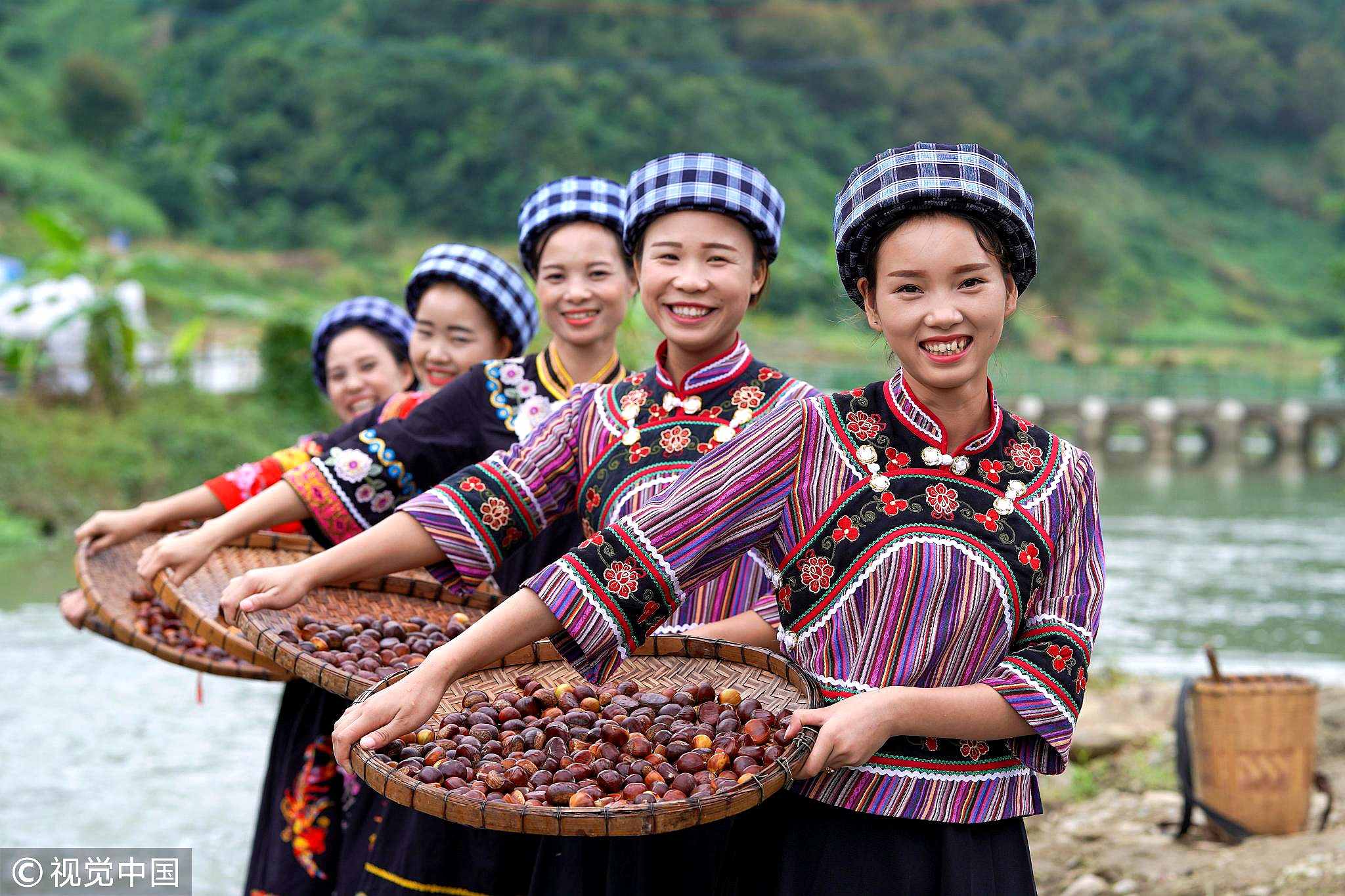
Girls dressed up in the traditional Buyi ethnic costume carry the Chinese chestnuts that were harvested and washed in the local village in Qianxinan Prefecture, southwest China's Guizhou Province, September 28, 2018. /VCG Photo
Girls dressed up in the traditional Buyi ethnic costume carry the Chinese chestnuts that were harvested and washed in the local village in Qianxinan Prefecture, southwest China's Guizhou Province, September 28, 2018. /VCG Photo
It is greatly recommended to eat some high-energy edibles with warm and moist nature against the frozen and dry air – pumpkin and Chinese chestnuts, both full of protein and carbohydrates, are a must-try.
The ways to cook them, however, really matter, among which the key rule is to avoid using too much salt and oil.
A bowl of soup that can help keep warm can be the best delicacy during the snowflake-flying days. Several tips are shown below for preparing a golden soup, which features the aforementioned seasonal ingredients.

Photos show the ingredients and several steps to prepare the golden soup featuring Chinese cabbage, Chinese chestnuts, and pumpkin. /CGTN Photo
Photos show the ingredients and several steps to prepare the golden soup featuring Chinese cabbage, Chinese chestnuts, and pumpkin. /CGTN Photo
Peel off several outer leaves of the Chinese cabbage before cut it in the direction of the veins since the rest are thicker and juicier. Stew the Chinese chestnuts and the pumpkin well in advance given that they do not cook as quickly as the cabbage.
Add very little seasonings such as salt, sugar, and pepper, or even zero if you would like to, to maintain the original flavor of the ingredients. Mash the pumpkin well to ensure that it will get well melted in the soup finally.
Watch the video at the beginning of this article for step-by-step instructions and more details on how to make a bowl of golden soup that warms you up!
Article by Hong Yaobin
Video by Xu Haoming
Videographer(s): Ma Jian, Hong Yaobin
Cover Image by Du Chenxin
Editor(s): Matthew Arrington Watson, Nadeem Gill
Chief Editor(s): Xu Jian, Zhao Jianfu







